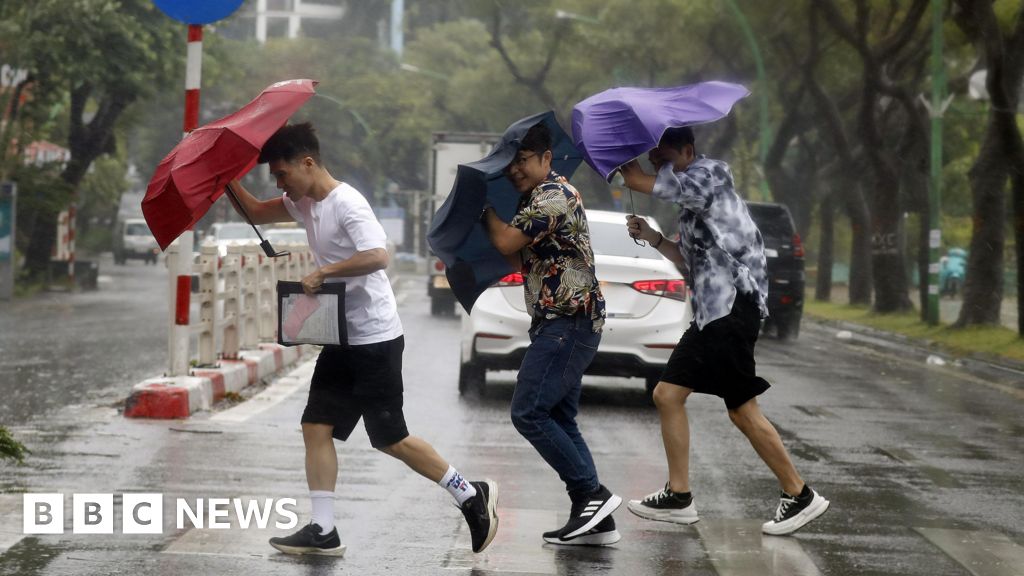
Super Typhoon Yagi, the most powerful storm in Asia this year, has made landfall in northern Vietnam.
The storm hit Hai Phong and Quang Ninh provinces with winds of up to 203 km/h (126 mph) on Saturday morning, the Indo-Pacific Tropical Cyclone Warning Center said.
In Hai Phong, news agency AFP reports metal roof sheets and commercial sign boards were seen flying across the city. One man was killed after winds brought down a tree, the agency said.
It comes after Yagi wreaked havoc on the island of Hainan – a popular tourist destination dubbed China’s Hawaii – on Friday.
At least three people have died in China due to the storm, and nearly 100 injured.
The city of Hai Phong on the coast of northern Vietnam has a population of two million and has faced the brunt of the storm.
Power outages hit parts of the city, home to multinational factories, on Saturday while four of the north’s airports have suspended operations for much of the day.
Nearly 50,000 people have been evacuated from coastal towns in Vietnam with authorities issuing a stay indoors warning.
Schools have been closed in 12 northern provinces, including in the capital Hanoi.
On Friday, China evacuated some 400,000 people in Hainan island ahead of Yagi’s arrival. Trains, boats and flights were suspended, while schools were shut.
Local media there reported widespread power outages, with about 830,000 households affected. Valuable crops have also been wiped out.
Videos on Chinese social media show windows being ripped out from tower blocks on Hainan.
A super typhoon is equivalent to a Category 5 hurricane.
Yagi is the second strongest typhoon so far this year and has doubled in strength since it hit northern Philippines early this week.
Floods and landslides brought by Yagi killed at least 13 people in northern Philippines, with thousands of people forced to evacuate to safer ground.
Scientists say typhoons and hurricanes are becoming stronger and more frequent with climate change. Warmer ocean waters mean storms pick up more energy, which leads to higher wind speeds.
A warmer atmosphere also holds more moisture, which can lead to more intense rainfall.



